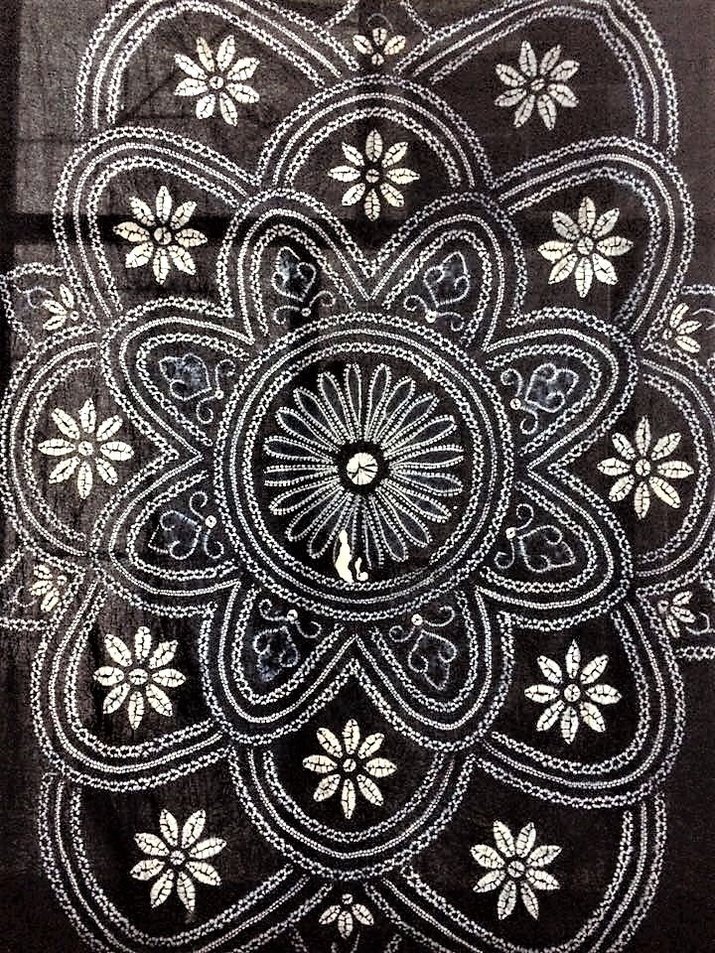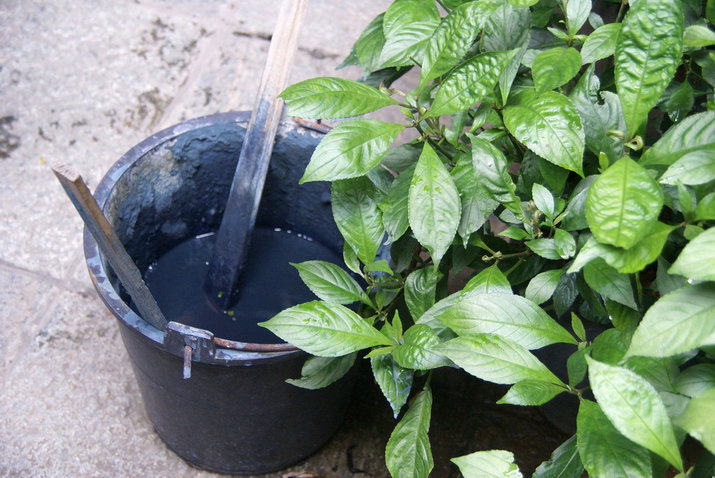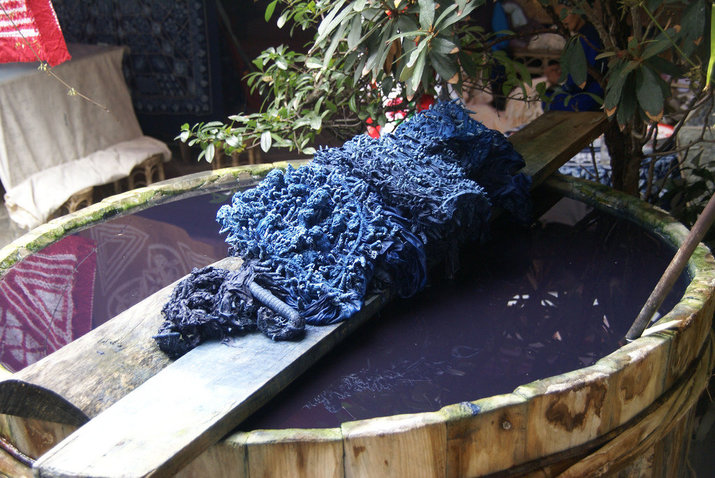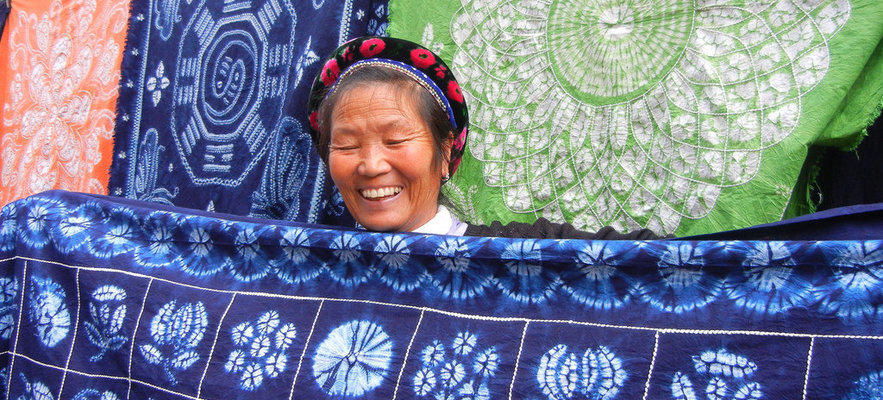You’ve probably heard of tie-dye before, from hippie rainbow T-shirts to DIY workshops, nowadays you can find it everywhere. But what do you really know about tie-dyeing?
History
In China tie-dyeing has a history of more than 1500 years. When tie-dyeing techniques came down to Dali from the central plains, the Bai ethnic group integrated it into their own culture and quickly made it their own. During the Ming and Qing dynasty Dali, Xizhou and Zhoucheng became famous for their high quality dyeing. In recent years Zhoucheng became famous again after it taught 5000 women how to tie-dye and built a small tie-dye industry. In 2006 Zhoucheng tie-dyeing became part of the “The first batch of national intangible cultural heritage list” in China.
Patterns

The Bai ethnic group has more than one thousand tie-dye patterns which reflects their culture, history, customs and beauty preferences. They use flowers, plants, fish, insects, birds, butterflies, mammals, folk characters and symbols. Both traditionally and know, the tie-dye products are made into clothes, scarves, bedding, tablecloth and curtains... and appreciated all over the world.
Materials

Yunnan tie-dyeing uses natural cloth with natural pigments, as it has been done for centuries. The cloth is usually cotton or cotton-hemp. The pigment is made from indigo, extracted from the Radix isatidis root (板蓝根Banlangen in Chinese). This root is also a Chinese medicinal herb used to dissipate excess heat from the body, remove toxic substances and diminish inflammation and detumescence. Due to this plants properties, wearing those tie-dyed garments or using the cloth as bedding is soothing to the skin, especially in summer. Once this root was found in the wild in high profusion, but recently Bai people started cultivating it due to it’s high demand.
Technique


Handmade Tie-dyeing is a long process, and has 17 different steps. First they have to design the pattern and draw it on the virgin cloth. Then they start knotting, washing, soaking, dyeing, rinsing, dyeing again and again and then drying the cloth in the sun. When it’s dry, they have to take out the stitches and unfold the cloth, wash it again and dry it, bleach it and dry it again, the last step is sewing.
You can see all those steps explained in this video.
Where can I see this?

Zhoucheng, a charming little old town not far from Xizhou and the butterfly spring in the Dali prefecture has become the Hometown of ethnic tie-dyeing . A lot of families in Zhoucheng have their own small handmade tie-dye factory, most of which you can visit. There you can see the whole process with your own eyes or buy 100% handmade souvenirs to help support this beautiful art-form. Zhoucheng town itself has really interesting features and a long history.
Do you want to see this with your own eyes? We can arrange a trip to Zhoucheng while you are visiting Dali. We also highly recommend our 7-days Yunnan charming old town tour which includes a visit to the Zhoucheng tie-dye factory.
- 1568 reads
- Like this







